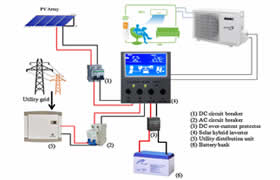Coconut Wastes as Bioresource for Sustainable Energy: Quantifying Wastes, Calorific Values and Emissions in Ghana
Coconut husks with the shells attached are potential bioenergy resources for fuel-constrained communities in Ghana. In spite of their energy potential, coconut husks and shells are thrown away or burned raw resulting in poor sanitation and environmental pollution. This study focuses on quantifying the waste proportions, calorific values and pollutant emissions from the burning of raw uncharred and charred coconut wastes in Ghana. Fifty fresh coconuts were randomly sampled, fresh coconut waste samples were sun-dried up to 18 days, and a top-lit updraft biochar unit was used to produce biochar for the study. The heat contents of the coconut waste samples and emissions were determined. From the results, 62–65% of the whole coconut fruit can be generated as wastes. The calorific value of charred coconut wastes was 42% higher than the uncharred coconut wastes. PM2.5 and CO emissions were higher than the WHO 24 h air quality guidelines (AQG) value at 25 °C, 1 atmosphere, but the CO concentrations met the WHO standards based on exposure time of 15 min to 8 h. Thus, to effectively utilise coconut wastes as sustainable bioresource-based fuel in Ghana, there is the need to switch from open burning to biocharing in a controlled system to maximise the calorific value and minimise smoke emissions.
